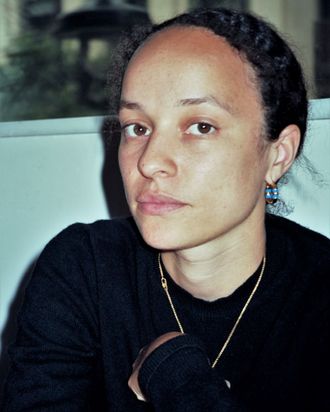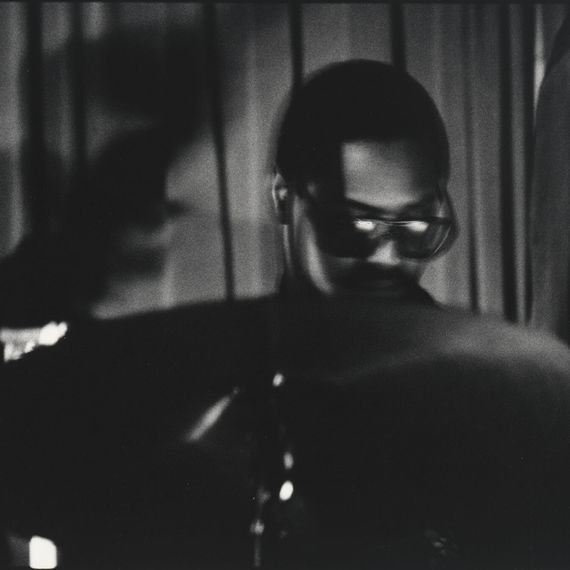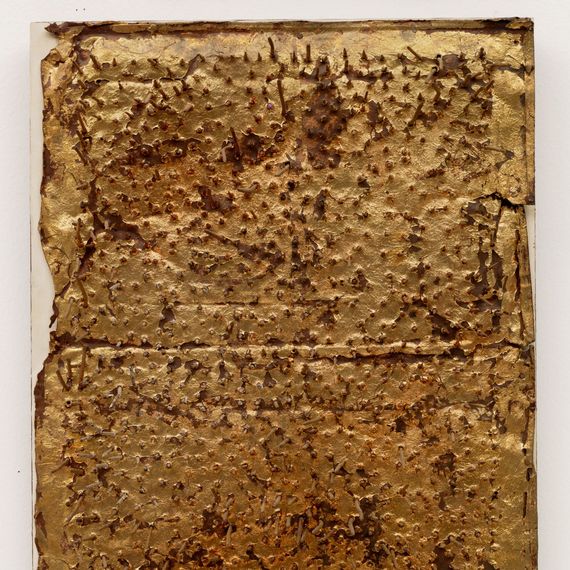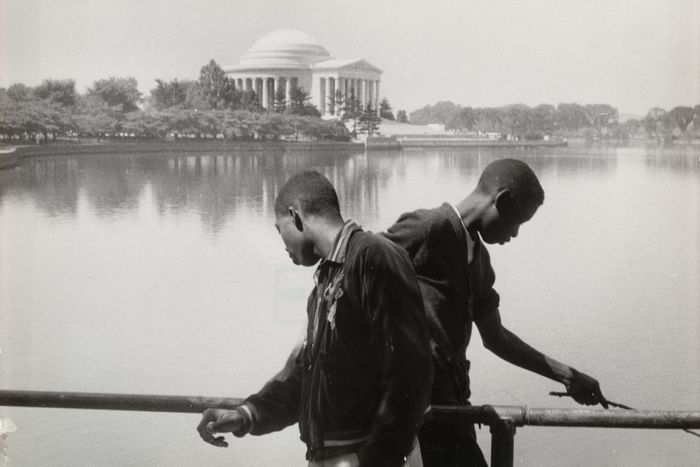
It’s the day before the opening of “Spirit Movers,” a new show at the Museum of Modern Art in New York City curated by Grace Wales Bonner, and the fashion designer needs to sign off on the placement of the title text over a photograph by Benjamin Patterson in the entryway. She takes a few steps backward and tilts her head sideways, folding her arms as she stares upward. She then takes many more steps back, as though she were herself a visitor entering the exhibit for the first time. Finally, after about three minutes, she gives the MoMA team the go-ahead to place it in the top-right corner.
Unlike the rest of the museum, “Spirit Movers” is free and open to the public as part of MoMA’s “Artist’s Choice” series. Wales Bonner, who is based in London, has been working on curating the show for the last year and a half, culling around 50 artworks from the museum’s vast collection that specifically explore sound, movement, and performance in some way, shape, or form.
Although she’s not a musician herself, music is something that often inspires her designs, whether it be for her own eponymous line or her ongoing collaboration with Adidas. Longtime fans might recall her ode to Ishmael Reed or her celebration of lovers’ rock, the British Afro-Caribbean music scene from the 1970s. In addition to being a fastidious researcher, she is fascinated by the seemingly impossible challenge of “translating sound or sound cultures through material,” she says, and chose artists like Terry Adkins, Moustapha Dimé, Agnes Martin, Man Ray, Betye Saar, and David Hammons, whose work she believes accomplishes this in various ways.
Before the opening, Wales Bonner walked the Cut through the exhibit.
Emilia Petrarca: There are some 200,000 works in the MoMA collection. Was it hard to narrow down your selection?
Grace Wales Bonner: It’s this incredibly vast collection that I’ve been working through. I’ve also been visiting the storage facility and seeing works there, which has been amazing. The works called out to me and pointed me in different directions. There’s been some anchors that have steered the show. But I think, for me, the idea of the show is what moves you — you have an immediate reaction to it or there’s something in the art that provokes you.
Can you tell me more about the theme, “Spirit Movers”?
Having a theme — a lens, a filter — definitely helped. The subject of how sound can be translated into different forms, or captured in different forms, is something that I’m continuously fascinated by and have researched a lot. As a designer, I’m always thinking about how you can translate sound or sound cultures through material — through weaving, cotton, etc. So the exhibition, as well as the photo book we worked on, Dream in the Rhythm, explores this sonic potential with the book focusing mainly on the photographic collection at MoMA.


Did you play any instruments growing up?
I played the trumpet and the piano, but I don’t think I was ever very good. I’m more of an appreciator of music than a player. Musical research is my artistic practice. My dad was quite musical; he played the piano, which was always around. I listened to records through my parents’ different tastes and then I think studying an instrument and the discipline of that was something I was encouraged to do. It’s always been an inspiration because I think it’s kind of impossible to translate music into another form. That impossibility is what keeps motivating me to come back to it.
Have you ever done a show like this before?
I did a show at Serpentine gallery in London in 2019, which involved commissioning new works from artists and curating. But this is my first time doing something like this in the U.S. MoMA is such an important institution, but everything can’t always be on display. So seeing the depth of the collection and working around those parameters has been quite interesting. Also, to show some artists and works that haven’t been seen from the collection as well.
The space, which is separate from the main museum and open to the public, is so unique. How did it inform your curation?
The double-high ceilings can be quite daunting to work with in terms of scale, but the idea is that different works move you around the space. I was also thinking about different rhythms of spacing and having quieter moments and louder moments. The placement is meant to be a compositional journey. There’s the possibility for something to happen — for the space to be activated, either now or in the past. The works talk to one another.
Are there any specific works you’d like to highlight?
This Terry Adkins work, Last Trumpet (1995), was one of the first works that I had in mind for this exhibition. Adkins is an artist that I’m really inspired by and that I’ve thought a lot about in the past. These instruments are sculptures, but he also performed with them as well. They were a part of his practice in different ways. I like that they suggest the potential for performance.
A lot of the works in the show have had a previous life and are made of materials that were repurposed and embedded with a new energy. Eracism (version 8b), by Pope.L, is another example of this.
David Hammons is another artist I always come back to. There’s always such a magical quality to his work, and this one, Afro Asian Eclipse (or Black China), has not been seen at MoMA yet as it just came into the collection recently. Something quite special about this show is being able to expand on this cultural crossing through different artists.
This work by Moustapha Dimé also has an amazing presence. It’s a butcher’s block, so I was thinking about the carving and the gesture of making and creating a form. But it has also got quite an amazing perspective and movement. I feel like it’s dancing or that it’s hearing something.
How does curating a show like this inform your work as a designer?
I think it helps to show, on a deeper level, what inspires my thinking as a designer. A lot of what I’m inspired by may come from other places, whether that’s literature, art, photography, etc. I’m very interested in research as an artistic practice, and I can express that through the exhibition, which is pretty special.
This interview has been edited and condensed for clarity.







